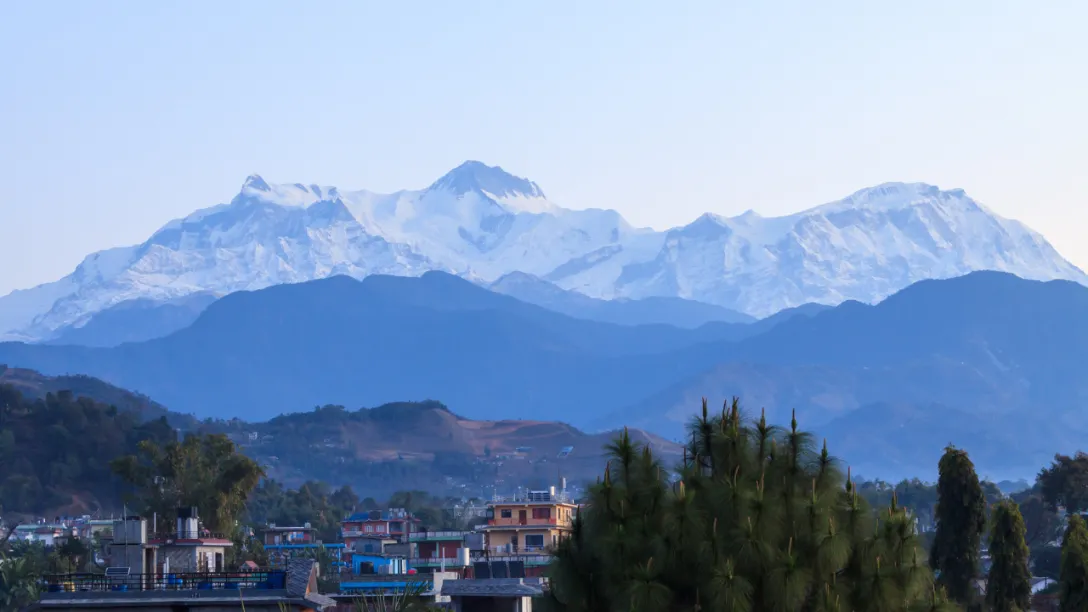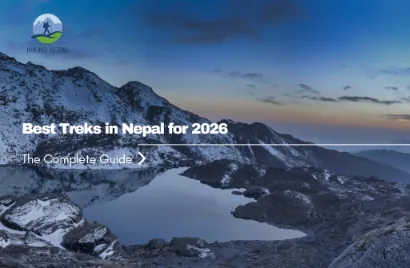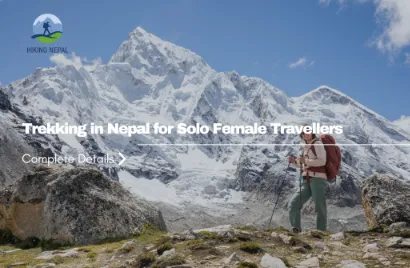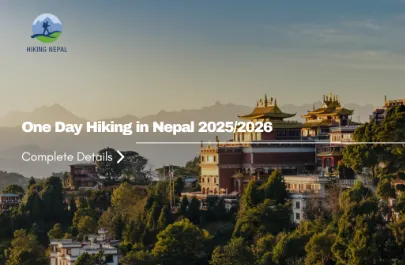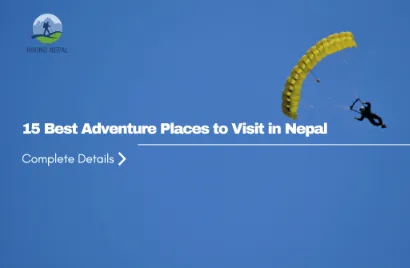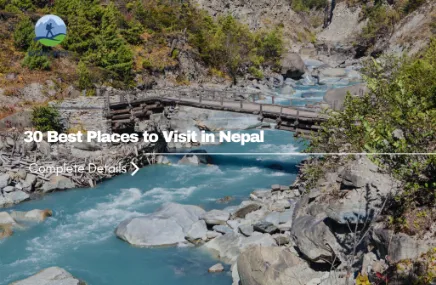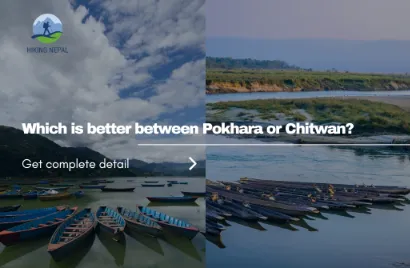Nepal is a country of contrasts where the world’s tallest mountains rise above fertile plains, ancient towns preserve centuries of art and culture, and forests shelter rare wildlife. Travelers come here not only to trek the Himalayas but also to walk through medieval cities, witness living traditions, and find peace in spiritual sites. From sunrise views over snow-capped peaks to the call of birds deep inside jungles, every corner of Nepal offers something memorable.
Exploring Nepal is not limited to the Everest and Annapurna regions. The Kathmandu Valley alone holds centuries of history and artistry in its three durbar squares, while hill towns like Bandipur and Tansen showcase traditional Newari and Magar culture. The plains of the Terai open into wildlife havens like Chitwan and Bardia National Parks. Spiritual seekers can find meaning in Lumbini, the birthplace of Buddha, or in sacred lakes and shrines across the Himalayas.
This guide brings together 25 of the best places to visit in Nepal. Each destination is introduced with background, a seasonal guide for the best time to see, and a note on what makes it truly special. Whether you are planning a short holiday or a long journey, this list helps you discover Nepal in all its diversity.
1. Kathmandu Durbar Square
Kathmandu Durbar Square is the historic heart of Nepal’s capital. Once the royal palace complex of the Malla kings, it is surrounded by intricate temples, courtyards, and statues that date back to the 12th century. Walking here feels like stepping into a living museum. Pagoda-style temples rise beside whitewashed neoclassical buildings, while local people still gather for festivals, rituals, and daily markets. The square is also home to the Kumari Ghar, the residence of the Living Goddess. Despite suffering damage during the 2015 earthquake, it remains a place of immense cultural value and is a UNESCO World Heritage Site.
Best Time to Visit
Season | Months | Experience |
| Spring | March to May | Pleasant weather, cultural festivals |
| Autumn | September to November | Clear skies, best for photography |
| Winter | December to February | Chilly mornings but fewer crowds |
| Monsoon | June to August | Wet and humid, not ideal |
Why is it Special
Kathmandu Durbar Square is special because it brings Nepal’s history to life. Here you can see centuries-old temples still used by locals, witness cultural rituals, and explore traditional Newari architecture that shaped the identity of Kathmandu.
2. Bhaktapur Durbar Square
Bhaktapur Durbar Square is often called an open-air museum. This medieval city, about 13 kilometers east of Kathmandu, is known for its well-preserved palaces, temples, and courtyards. The 55-Window Palace, Nyatapola Temple, and Vatsala Temple are among the highlights. Walking through Bhaktapur feels quieter and more authentic compared to Kathmandu, as many of its narrow lanes remain traffic-free. The city is also famous for its pottery squares, where craftsmen shape clay into beautiful vessels just as their ancestors did.
Best Time to Visit
Season | Months | Experience |
| Spring | March to May | Flower blooms, local festivals |
| Autumn | September to November | Best weather for sightseeing |
| Winter | December to February | Crisp air, fewer visitors |
| Monsoon | June to August | Slippery streets but lush scenery |
Why is it Special
Bhaktapur is special because it preserves the charm of medieval Nepal. Its temples and courtyards are not just monuments but part of everyday life, with artisans, farmers, and worshippers still active within the city walls.
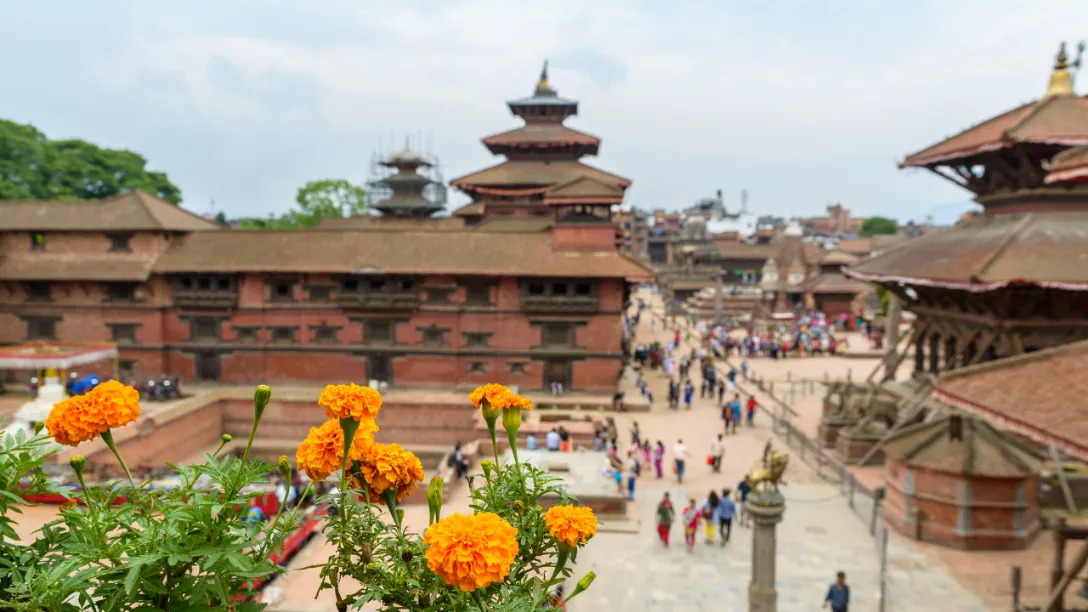
3. Patan Durbar Square
Located just across the Bagmati River from Kathmandu, Patan Durbar Square is another UNESCO World Heritage Site filled with remarkable artistry. Patan, also called Lalitpur, is known for its Newar craftsmen whose skills in metalwork and woodcarving are world-renowned. Dozens of temples surround the square, each decorated with intricate carvings. The Krishna Mandir, built entirely from stone, is a striking landmark. The Patan Museum inside the old palace is regarded as one of the best in South Asia for learning about Hindu and Buddhist art.
Best Time to Visit
Season | Months | Experience |
| Spring | March to May | Lively festivals, mild weather |
| Autumn | September to November | Clear views, ideal for exploration |
| Winter | December to February | Cold mornings but quiet atmosphere |
| Monsoon | June to August | Wet but culturally active |
Why is it Special
Patan Durbar Square is special because it concentrates fine art and architecture. It shows the peak of Newar craftsmanship and offers visitors a deeper understanding of Nepal’s religious traditions.
4. Nagarkot
Nagarkot is a hilltop village east of Kathmandu, famous for its sunrise and sunset views over the Himalayas. On clear mornings, you can see peaks from Langtang to Everest. The village sits at 2,175 meters and offers a peaceful escape from the busy city. Small hotels and guesthouses dot the ridge, making it a popular overnight trip for both tourists and locals. Besides mountain views, Nagarkot is surrounded by terraced fields and forest trails that invite short hikes.
Best Time to Visit
Season | Months | Experience |
| Spring | March to May | Clear mornings, colorful landscapes |
| Autumn | September to November | Crisp skies, best mountain views |
| Winter | December to February | Cold but spectacular sunrise |
| Monsoon | June to August | Misty and less visible peaks |
Why is it Special
Nagarkot is special because it offers one of the easiest and most rewarding mountain panoramas near Kathmandu. It is accessible yet gives travelers the feeling of being close to the Himalayas.
5. Langtang Region
The Langtang Valley, often called the “Valley of Glaciers,” lies north of Kathmandu and is one of the closest trekking regions to the capital. The valley is known for its alpine meadows, yak pastures, and the backdrop of Langtang Lirung, a towering 7,234-meter peak. The 2015 earthquake severely affected the region, but trekking has revived and visitors find it welcoming again. Trekkers can explore Tamang villages, Buddhist monasteries, and scenic trails leading to Kyanjin Gompa, surrounded by snowy peaks.
Best Time to Visit
Season | Months | Experience |
| Spring | March to May | Rhododendron blooms, mild weather |
| Autumn | September to November | Best trekking season with clear skies |
| Winter | December to February | Cold but fewer trekkers |
| Monsoon | June to August | Trails muddy and landslides possible |
Why is it Special
The Langtang Region is special for its accessibility, natural beauty, and cultural richness. It combines alpine landscapes with authentic Tamang culture, offering an immersive Himalayan experience without the crowds of Everest or Annapurna.
6. Sagarmatha National Park and Everest Base Camp
Sagarmatha National Park is home to Mount Everest, the highest mountain in the world, and its surrounding peaks. A trek through the park takes you from lush forests of pine and rhododendron to high-altitude landscapes of ice and rock. Along the way, villages like Namche Bazaar, Tengboche, and Dingboche provide a look into Sherpa culture. Reaching Everest Base Camp at 5,364 meters is one of the most famous trekking experiences on earth. The park is a UNESCO World Heritage Site, valued for its biodiversity and stunning mountain environment.
Best Time to Visit
Season | Months | Experience |
| Spring | March to May | Rhododendrons, climbing season |
| Autumn | September to November | Best trekking weather, clear skies |
| Winter | December to February | Very cold, fewer crowds |
| Monsoon | June to August | Poor visibility, not ideal |
Why is it Special
This region is special because it brings trekkers face-to-face with Mount Everest and the world’s highest peaks. It is both a natural wonder and a cultural experience as you meet Sherpa people who have lived in these mountains for centuries.
7. Gokyo Lake
Gokyo Lake is a high-altitude freshwater lake system in the Everest region, located at an elevation of around 4,700 meters. The turquoise waters of the lakes shine against a backdrop of snowy peaks, creating one of the most scenic spots in Nepal. Trekkers often include Gokyo in an alternative route to Everest Base Camp, reaching the viewpoint of Gokyo Ri for panoramic views of Everest, Cho Oyu, and other Himalayan giants. The lakes are considered sacred by both Hindus and Buddhists.
Best Time to Visit
Season | Months | Experience |
| Spring | March to May | Blue skies, warmer weather |
| Autumn | September to November | Clear mountain reflections |
| Winter | December to February | Frozen lakes but magical atmosphere |
| Monsoon | June to August | Trails slippery, not recommended |
Why is it Special
Gokyo Lake is special because of its rare combination of natural beauty and spiritual importance. Standing by its shores, you see both a breathtaking landscape and a place deeply connected to local beliefs.
8. Arun Valley in the Makalu Region
The Arun Valley lies between the Everest and Makalu regions and is one of Nepal’s least explored trekking areas. It is known for its deep valleys, lush forests, and terraced fields. The trail passes through Rai and Sherpa villages, where traditional farming and hospitality give trekkers a sense of rural life. The valley is rich in biodiversity, with more than 650 species of birds and many rare plants. It is considered a challenging trek due to its steep ascents and descents, but it rewards travelers with untouched landscapes.
Best Time to Visit
Season | Months | Experience |
| Spring | March to May | Wildflowers and mild conditions |
| Autumn | September to November | Best visibility and trekking weather |
| Winter | December to February | Cold but clear skies |
| Monsoon | June to August | Very wet, leeches common |
Why is it Special
Arun Valley is special because it remains off the beaten path. Unlike Everest or Annapurna, this region offers solitude and the chance to experience remote villages and natural diversity without large trekking crowds.
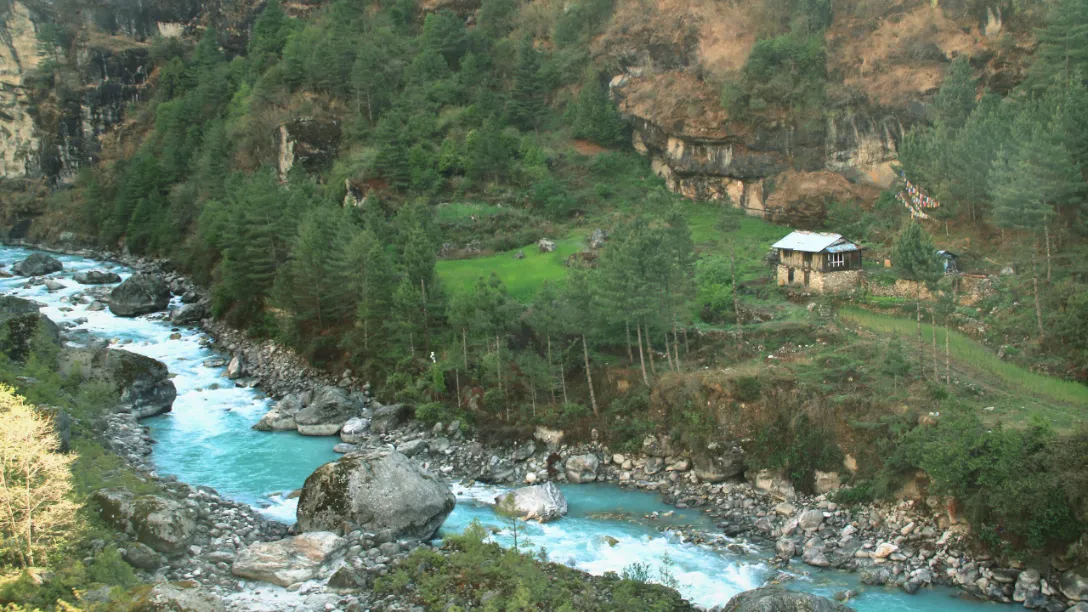
9. Annapurna Region
The Annapurna Region is one of the most popular trekking destinations in Nepal, offering a variety of trails from short treks to multi-week adventures. It is home to the famous Annapurna Circuit, Annapurna Base Camp Trek, and shorter hikes like Poon Hill. The landscapes range from subtropical forests and rice terraces to high mountain deserts. Villages along the way showcase Gurung and Thakali culture, with welcoming teahouses for trekkers. Peaks such as Annapurna I, Dhaulagiri, and Machapuchare create dramatic backdrops for the journey.
Best Time to Visit
Season | Months | Experience |
| Spring | March to May | Rhododendron blooms, mild conditions |
| Autumn | September to November | Best trekking weather |
| Winter | December to February | Cold but fewer trekkers |
| Monsoon | June to August | Trails muddy and landslides possible |
Why it is Special
The Annapurna Region is special for its diversity. Trekkers can experience everything from alpine scenery to desert-like valleys, all within a single trip. The blend of landscapes and cultures makes it a top choice for travelers.
10. Pokhara
Pokhara is Nepal’s second-largest city and a natural gateway to the Annapurna Himalayas. It is famous for Phewa Lake, where colorful boats float beneath the reflection of Machapuchare, the “Fishtail Mountain.” Pokhara is also known as an adventure hub, offering paragliding, boating, zip-lining, and treks that start directly from the city. The lakeside area is filled with cafes, restaurants, and guesthouses, creating a relaxed atmosphere for travelers. Beyond the lake, you can visit caves, waterfalls, and viewpoints like Sarangkot, which is popular for sunrise views.
Best Time to Visit
Season | Months | Experience |
| Spring | March to May | Warm weather, adventure activities |
| Autumn | September to November | Best visibility for mountain views |
| Winter | December to February | Cool, peaceful environment |
| Monsoon | June to August | Rainy but lush scenery |
Why is it Special
Pokhara is special because it combines natural beauty with comfort and adventure. It is a place where you can rest by the lake, try thrilling activities, or set off on famous treks like Annapurna Base Camp.
11. Tilicho Lake
Tilicho Lake in the Annapurna region is one of the highest lakes in the world at 4,919 meters. It sits quietly among towering peaks, often reflecting snow-covered summits on its surface. The lake has become a sacred destination for Hindu pilgrims, believed to be connected to ancient stories from the Ramayana. For trekkers, reaching Tilicho is both a challenge and a reward, as the trail takes you through remote villages, rocky cliffs, and panoramic ridges.
Best Time to Visit
Season | Condition |
| Spring (Mar-May) | Stable weather, blooming rhododendrons |
| Autumn (Sep-Nov) | Best visibility and clear skies |
| Winter (Dec-Feb) | Harsh snow, not ideal |
| Summer (Jun-Aug) | Risk of landslides, heavy rain |
Why It’s Special
Tilicho Lake is not just about the altitude but about the raw wilderness. Few places combine spiritual significance with such breathtaking natural beauty. The sense of isolation adds to its mystery, making it a place where you feel truly away from the modern world.
12. Upper Mustang
Upper Mustang, often called the Last Forbidden Kingdom, was opened to trekkers only in the 1990s. Before that, it remained hidden, preserving an ancient Tibetan way of life. The landscape here is strikingly different from the green hills of Nepal; it is a desert plateau of ochre cliffs, caves, and windswept valleys. Walking through Mustang feels like stepping into history, where mud-walled towns, whitewashed monasteries, and centuries-old traditions still shape everyday life.
Best Time to Visit
Season | Condition |
| Spring (Mar-May) | Clear skies, pleasant trekking |
| Autumn (Sep-Nov) | Peak season with festivals and views |
| Winter (Dec-Feb) | Very cold, most lodges shut |
| Summer (Jun-Aug) | Ideal as the region lies in rain shadow |
Why It’s Special
The allure of Upper Mustang lies in its blend of culture and landscape. Lo Manthang, the walled capital, is a living museum of Tibetan heritage. The stark beauty of red cliffs against blue skies leaves a lasting impression. It feels untouched by time.
13. Samagaun in Manaslu Region
Samagaun is a traditional Sherpa village tucked deep in the Manaslu Conservation Area. It serves as a base for trekkers heading toward Manaslu Base Camp and the Larkya La Pass. The village is a cluster of stone houses surrounded by fields of barley and potatoes, with prayer flags fluttering in the wind. Towering above is Mt. Manaslu, the eighth-highest peak in the world, creating one of the most dramatic backdrops you can find.
Best Time to Visit
Season | Condition |
| Spring (Mar-May) | Flowers bloom, good trekking season |
| Autumn (Sep-Nov) | Best clarity for views |
| Winter (Dec-Feb) | Very cold, village almost isolated |
| Summer (Jun-Aug) | Trails muddy, leeches present |
Why It’s Special
Samagaun gives an authentic Himalayan experience with fewer tourists compared to Everest or Annapurna regions. The warm hospitality of locals, the presence of ancient monasteries, and the untouched scenery make it a gem for cultural and natural exploration.
14. Bandipur
Bandipur is a hilltop settlement between Kathmandu and Pokhara, known for its preserved Newari architecture and tranquil atmosphere. The main bazaar is lined with beautifully restored traditional houses that now host guesthouses, cafés, and shops. Beyond its architecture, Bandipur offers wide views of the Himalayas and rolling valleys. The calm pace of life here makes it a perfect stop for those wanting to step back in time.
Best Time to Visit
Season | Condition |
| Spring (Mar-May) | Warm, flowers in bloom |
| Autumn (Sep-Nov) | Crisp skies, best for views |
| Winter (Dec-Feb) | Cold mornings but quiet charm |
| Summer (Jun-Aug) | Rain can obscure views |
Why It’s Special
Unlike many towns that rush toward modernization, Bandipur has kept its soul intact. It feels like an open-air museum where you can still see artisans at work, hear traditional music, and enjoy a relaxed atmosphere that connects you to old Nepal.
15. Tansen
Tansen is a historical town in the Palpa district, perched on the hills overlooking the Kali Gandaki River. Once the seat of the Magar kingdom and later an important Newar trading hub, Tansen blends cultural depth with natural beauty. Its cobbled streets, traditional houses, and panoramic views of the Annapurna and Dhaulagiri ranges create an enriching travel experience.
Best Time to Visit
Season | Condition |
| Spring (Mar-May) | Mild temperatures, greenery |
| Autumn (Sep-Nov) | Clear skies, best for photography |
| Winter (Dec-Feb) | Cold evenings but quiet |
| Summer (Jun-Aug) | Heavy rainfall |
Why It’s Special
Tansen is less crowded compared to big tourist centers but offers equally rich heritage. The Rani Mahal, often called the Taj Mahal of Nepal, is a stunning riverside palace nearby. The town’s mix of history, handicrafts, and mountain views makes it memorable.
16. Lumbini
Lumbini, the birthplace of Siddhartha Gautama (Buddha), is one of the most important pilgrimage sites in the world. Located in the Terai plains, Lumbini is home to the Maya Devi Temple, Ashokan Pillar, and monasteries built by Buddhist communities from around the globe. Walking through Lumbini feels like stepping into a spiritual crossroads where cultures and faiths meet.
Best Time to Visit
Season | Condition |
| Spring (Mar-May) | Pleasant, ideal for exploration |
| Autumn (Sep-Nov) | Comfortable weather, festivals |
| Winter (Dec-Feb) | Cool but manageable |
| Summer (Jun-Aug) | Very hot and humid |
Why It’s Special
The significance of Lumbini lies not just in history but in the atmosphere of peace it carries. Monks chanting, pilgrims meditating, and the symbolic eternal flame make it a place of reflection and calm.
17. Chitwan National Park
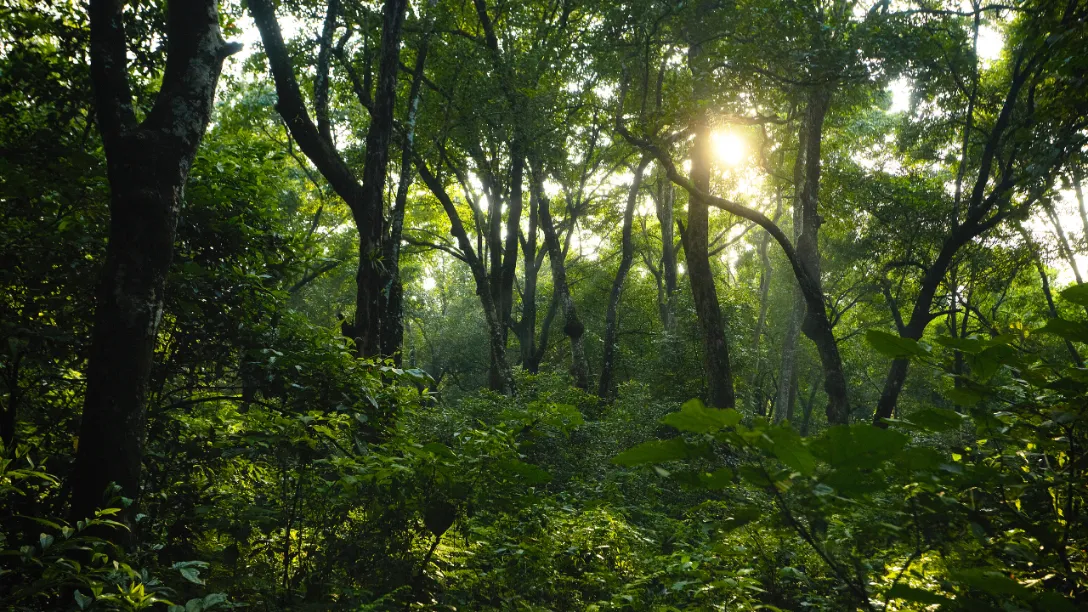
Chitwan National Park is Nepal’s first national park and a UNESCO World Heritage Site. It is famous for its rich biodiversity, including the rare one-horned rhinoceros, Bengal tiger, gharial crocodile, and countless bird species. The park’s terrain of grasslands, wetlands, and sal forests makes it one of the best safari destinations in Asia.
Best Time to Visit
Season | Condition |
| Spring (Mar-May) | Warm, good for wildlife spotting |
| Autumn (Sep-Nov) | Cool and dry, best season |
| Winter (Dec-Feb) | Cold mornings, clear sightings |
| Summer (Jun-Aug) | Flooding and heavy rain |
Why It’s Special
Chitwan offers a complete jungle experience with jeep safaris, canoe rides, and cultural programs by the Tharu community. It combines adventure with culture in a way few other destinations do.
18. Bardia National Park
Bardia National Park lies in western Nepal and is less visited than Chitwan, offering a more secluded jungle experience. The park is home to wild elephants, tigers, rhinos, and rich birdlife. Its vast wilderness, flowing rivers, and grasslands create a sense of raw adventure.
Best Time to Visit
Season | Condition |
| Spring (Mar-May) | Active wildlife sightings |
| Autumn (Sep-Nov) | Clear skies, best season |
| Winter (Dec-Feb) | Cool and quiet |
| Summer (Jun-Aug) | Not ideal, heavy rain |
Why It’s Special
Bardia is for those who seek an offbeat experience. It gives you a higher chance of seeing tigers compared to Chitwan. The quiet, untouched atmosphere makes it feel like a true wilderness.
19. Janakpur
Janakpur is an important cultural and religious center in Nepal, linked to the Hindu epic Ramayana. It is believed to be the birthplace of Sita, wife of Lord Rama. The city is known for the Janaki Mandir, a grand marble temple that attracts thousands of pilgrims. The streets are filled with colorful shops, rituals, and festivals, creating a lively atmosphere year-round.
Best Time to Visit
Season | Condition |
| Spring (Mar-May) | Warm, good for pilgrimage |
| Autumn (Sep-Nov) | Festivals like Vivaha Panchami |
| Winter (Dec-Feb) | Cool and pleasant |
| Summer (Jun-Aug) | Very hot and humid |
Why It’s Special
Janakpur blends devotion, art, and culture. Its Mithila paintings, sacred ponds, and grand temple complexes give a glimpse into both spiritual and artistic heritage.
20. Ilam
Ilam is a hill district in eastern Nepal known as the country’s tea capital. Rolling hills covered with tea gardens, misty mornings, and fresh air make it a refreshing escape. The region also has rivers, dense forests, and viewpoints offering Himalayan panoramas.
Best Time to Visit
Season | Condition |
| Spring (Mar-May) | Fresh greenery, pleasant weather |
| Autumn (Sep-Nov) | Clear skies, harvest season |
| Winter (Dec-Feb) | Cold but scenic |
| Summer (Jun-Aug) | Rainy but lush |
Why It’s Special
Ilam offers calmness away from busy tourist centers. Its tea estates, homestays, and cultural mix of ethnic groups make it both scenic and welcoming.
21. Tansen
Tansen, the medieval hill town of Palpa district, offers a blend of culture, history, and scenic charm. Once the seat of the powerful Magar kingdom of Tanahun, Tansen has preserved its distinct identity through architecture, traditions, and festivals. Its streets twist around old Rana-era mansions, carved Newari houses, and bustling local markets. At an elevation of 1,350 meters, Tansen gives sweeping views of the Kali Gandaki Valley and snowcapped Himalayan ranges. The calm atmosphere and cultural depth make it an inviting destination for those who enjoy exploring towns rich in heritage but far from mass tourism.
Best Time to Visit
Season | Months | What to Expect |
| Spring | March to May | Blooming flowers, lively town atmosphere |
| Summer/Monsoon | June to August | Green hills, occasional rain |
| Autumn | September to November | Clear skies, festive season |
| Winter | December to February | Crisp air, good visibility |
Why it is Special
Tansen is special because it blends Magar, Newari, and Rana influences into one town. It offers both culture and Himalayan views, plus it remains relatively untouched by large-scale tourism. For those seeking authenticity, it is an underrated gem.
22. Khaptad National Park
Khaptad National Park is one of Nepal’s most underrated gems. Located in the far west, it blends spiritual and natural beauty. The park is associated with Khaptad Baba, a revered spiritual figure, and still holds hermitages and meditation spots. Its landscapes shift from rolling meadows to dense forests and alpine pastures, creating incredible biodiversity. Khaptad is also known for birdwatching and medicinal plants. The peaceful trails make it a sanctuary for trekkers seeking offbeat experiences.
Best Time to Visit
Season | Months | What to Expect |
| Spring | March to May | Green meadows, colorful flowers |
| Summer/Monsoon | June to August | Lush but slippery trails |
| Autumn | September to November | Best trekking season, clear skies |
| Winter | December to February | Snowfall, harsh weather |
Why it is Special
Khaptad is special because it merges spirituality with wilderness. Few places allow travelers to explore pristine landscapes while also connecting with Nepal’s spiritual traditions.
23. Rara Lake
Rara Lake, often called the "Queen of Lakes," is the largest lake in Nepal. Situated in Mugu district, it is surrounded by Rara National Park, which shelters unique flora and fauna. The turquoise waters mirror snowcapped peaks and forests, creating a breathtaking scene that feels untouched. The journey to Rara is challenging due to its remote location, but the reward is solitude and beauty beyond imagination. Trekkers often describe it as one of the most peaceful places in Nepal.
Best Time to Visit
Season | Months | What to Expect |
| Spring | March to May | Clear skies, blooming flowers |
| Summer/Monsoon | June to August | Heavy rainfall, limited access |
| Autumn | September to November | Best views, stable weather |
| Winter | December to February | Snow-covered trails, harsh cold |
Why it is Special
Rara is special because it is untouched and unspoiled. Its isolation preserves its magic, giving visitors a rare experience of true wilderness.
24. Dhorpatan Hunting Reserve
Dhorpatan Hunting Reserve is unique in Nepal as the only legally designated hunting reserve. Located in the midwestern region, it combines high-altitude grasslands, forests, and rivers. While controlled hunting is permitted, the area is also rich in biodiversity and trekking opportunities. Blue sheep, Himalayan tahr, and several bird species inhabit the reserve. Trekkers can explore remote trails, alpine scenery, and rural villages while learning about a unique conservation approach that balances local economy and wildlife management.
Best Time to Visit
Season | Months | What to Expect |
| Spring | March to May | Green meadows, active wildlife |
| Summer/Monsoon | June to August | Rain and limited access |
| Autumn | September to November | Best season for trekking |
| Winter | December to February | Cold and snow in higher regions |
Why is it Special
Dhorpatan is special for its mix of wilderness and cultural landscapes. It is one of the least visited regions, which adds to its exclusivity.
25. Gosaikunda Lake
Gosaikunda Lake, located in the Langtang region, is one of Nepal’s most sacred alpine lakes. At an altitude of 4,380 meters, it is a pilgrimage site for both Hindus and Buddhists. During the Janai Purnima festival, thousands of pilgrims hike to the lake to take a holy dip, believed to cleanse sins. Beyond its spiritual significance, the trek to Gosaikunda offers pristine landscapes, rugged trails, and panoramic views of the Langtang and Ganesh Himal ranges. The lake itself, with its crystal-clear waters and surrounding peaks, leaves a lasting impression.
Best Time to Visit
Season | Months | What to Expect |
| Spring | March to May | Blooming rhododendrons, clear skies |
| Summer/Monsoon | June to August | Risk of landslides, pilgrimage season |
| Autumn | September to November | Best trekking season, stable weather |
| Winter | December to February | Snow, frozen lake, harsh conditions |
Why is it Special
Gosaikunda is special because it combines faith with alpine beauty. It is a place where nature and spirituality exist side by side, making it deeply moving for all who visit.
A single destination does not define Nepal. It is a country where culture, history, and nature blend at every turn. From Himalayan treks in Everest and Annapurna to the peaceful plains of Lumbini and Chitwan’s jungles, every place has its own rhythm and meaning. Cities like Bhaktapur and Bandipur preserve timeless traditions, while remote areas like Upper Mustang and Arun Valley offer glimpses into untouched worlds.
The best time to visit varies across regions, but spring and autumn remain the most reliable seasons. Whether you want adventure, culture, or peace, Nepal has something to offer in all corners. Exploring these 30 places is more than travel; it is an encounter with the heart of the Himalayas and the warmth of its people. Explore Nepal with Hiking Nepal.
